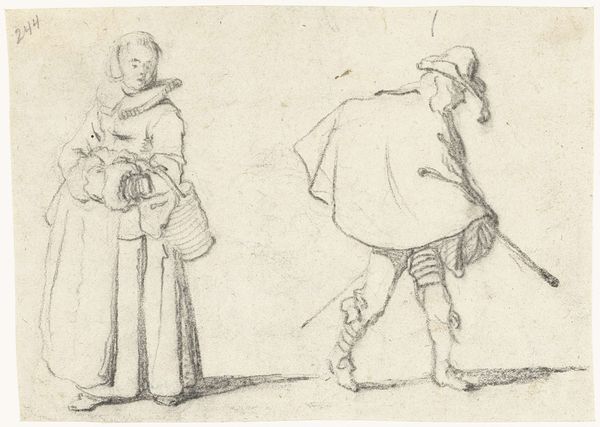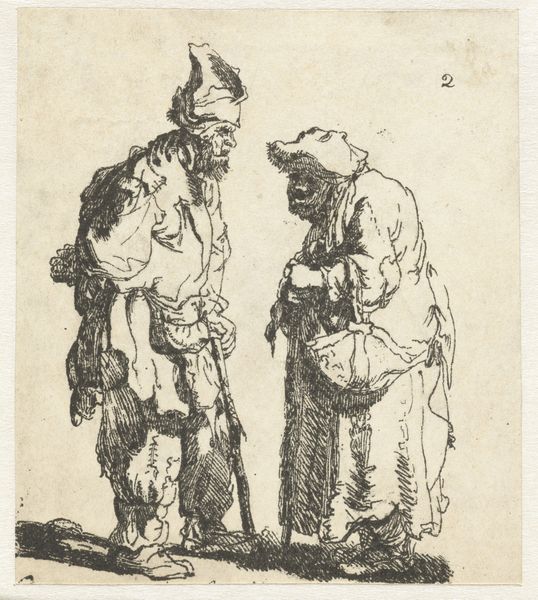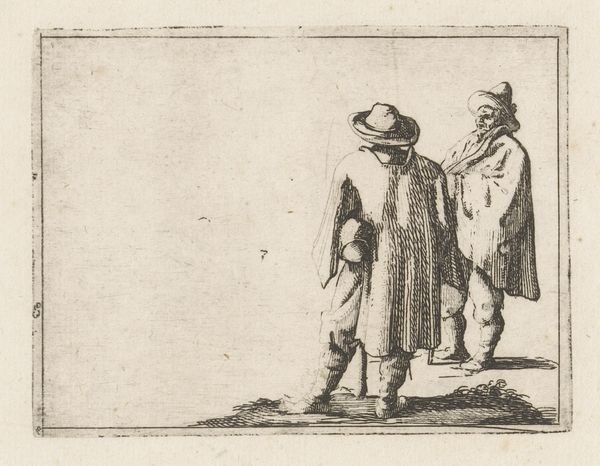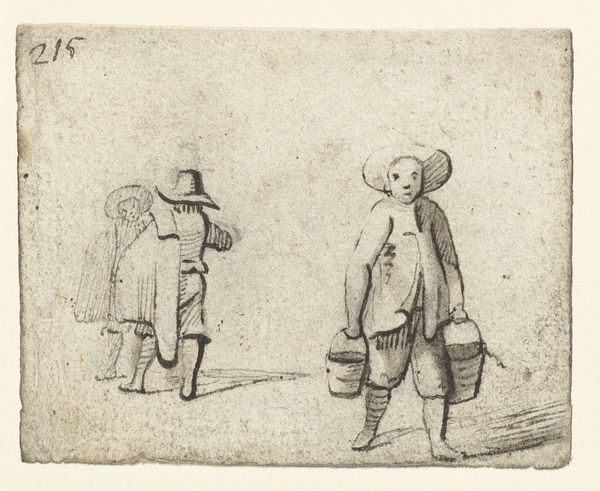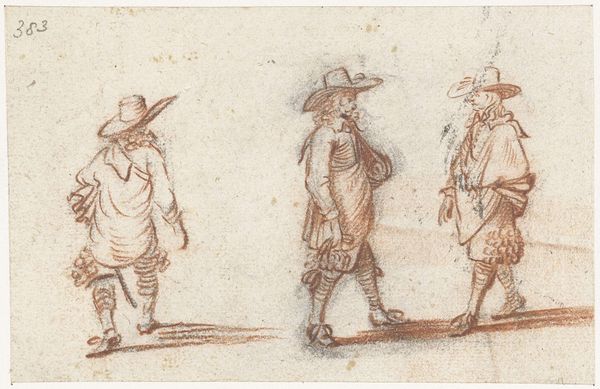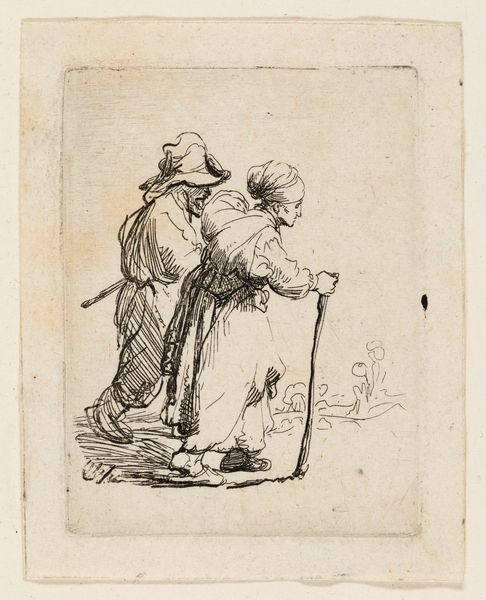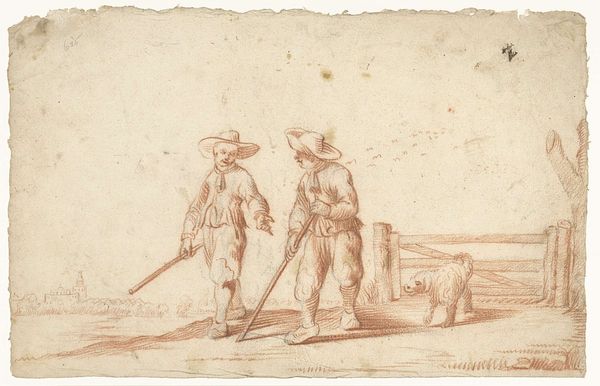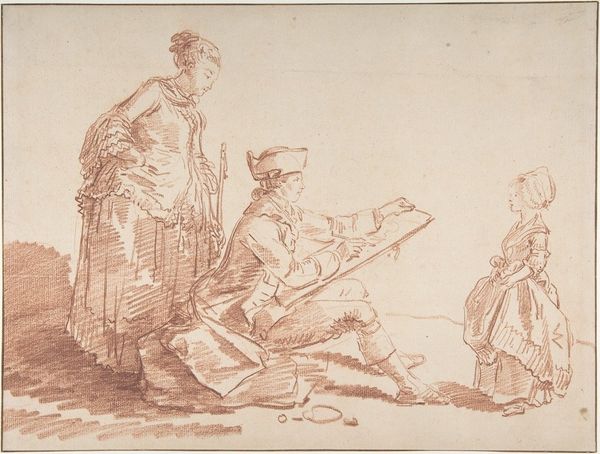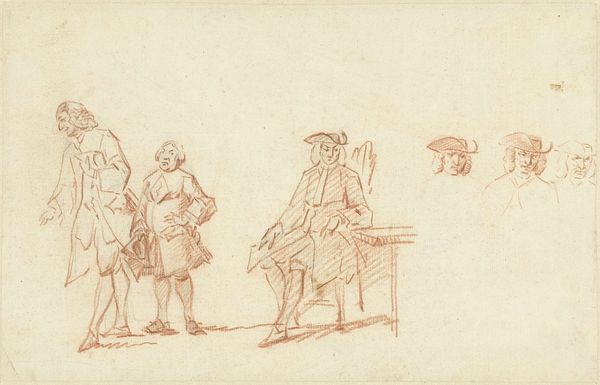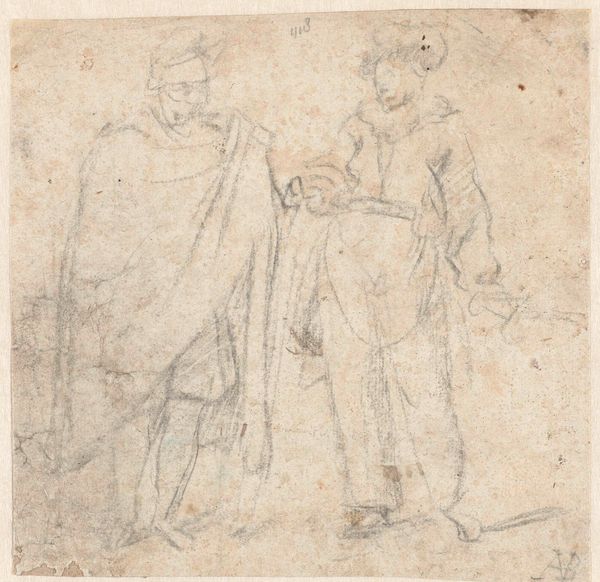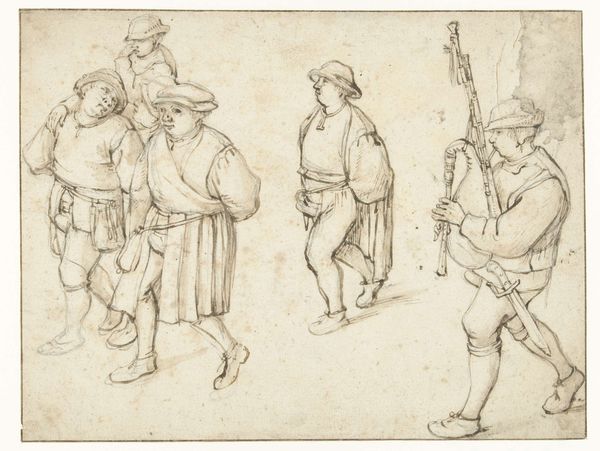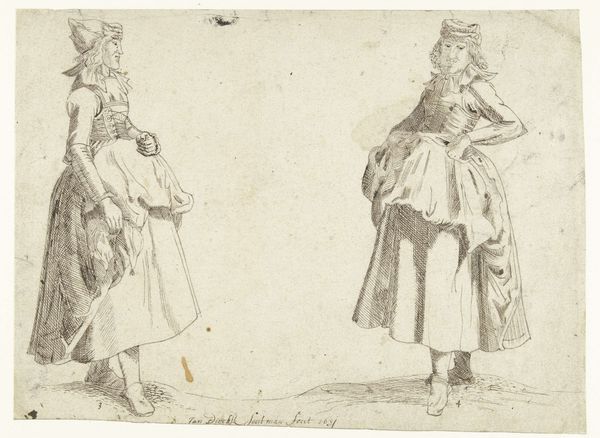
Studieblad van een staande urinerende man, van achteren en van opzij after 1627
0:00
0:00
gerardteriiborch
Rijksmuseum
drawing, paper, pencil
#
portrait
#
drawing
#
amateur sketch
#
toned paper
#
light pencil work
#
dutch-golden-age
#
pencil sketch
#
incomplete sketchy
#
figuration
#
paper
#
personal sketchbook
#
ink drawing experimentation
#
pencil
#
sketchbook drawing
#
pencil work
#
genre-painting
#
sketchbook art
Dimensions: height 141 mm, width 186 mm
Copyright: Rijks Museum: Open Domain
Curator: This is a page from Gerard ter Borch the Younger’s sketchbook. Made with pencil on paper sometime after 1627, it's titled “Study Sheet of a Standing Urinating Man, from Behind and from the Side.” Editor: Well, it's certainly… intimate. My initial reaction is a mix of amusement and discomfort. The vulnerability is striking, even in this rough sketch. Curator: Exactly! Ter Borch captured everyday life. It reflects the burgeoning interest in genre painting in the Dutch Golden Age, but presented without much grandeur. Editor: But what does it mean to see a man in this act? Is it simply a recording of daily life, or is there something deeper intended? Curator: Likely it's multifaceted. The "everyman" quality subverts the conventions of heroic or elevated subject matter in art at the time. By showing this, Ter Borch nods towards human equality and the dignity of the individual, even in undignified moments. It speaks to Dutch republican ideals, subtly emphasizing their value for the collective. Editor: That resonates. Public urination wasn’t just a practical matter back then; it had a social dimension. Seeing it here makes me wonder who was supposed to be viewing these images, and in what settings? The contrast of privacy versus performance raises fascinating questions about public behavior then and now. Curator: And perhaps, looking at the style, the sketching suggests impermanence, like fleeting memories. Also, don’t discount humor. Art doesn't have to be monumental; the simple acts can communicate just as much. Editor: It truly reveals how loaded the ‘unposed’ can be. The mundane actions expose norms about embodiment and shame, both shaped by history and influencing societal structure to this day. Curator: Ter Borch gives us a remarkable glimpse, a record of human behavior that resonates with our contemporary experience. The quick strokes of the pencil might just offer a lot for cultural exploration. Editor: Yes. Sometimes, the most revelatory insights emerge from unassuming artifacts. This seemingly minor sketch captures not just the exterior, but social values that define a period.
Comments
No comments
Be the first to comment and join the conversation on the ultimate creative platform.
